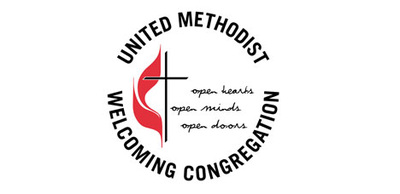 The Generous Journey: An Outpouring of Love By Pastor Tracey Leslie Scripture: John 12:1-8 I confess that I am rarely apt to turn to the Harvard Business Review when I’m seeking theological inspiration. But this week, while perusing the study “A Disciple’s Path” by Methodist pastor James Harnish, I was motivated to Google an article by economist Umair Haque. In the article, written in 2011, Haque proposes, in a nut shell, that the root of our economic woes in America has to do with what we value. Haque postulates “More, bigger, faster, cheaper, nastier has built an economy that might just be in furious pursuit of mediocrity.”[i] This maddening pursuit of mediocrity, he suggests, reflects our failure to put what, why and who we love above all else. See what I mean? You don’t expect to find theology in the Harvard Business Review. But there it was. An economist’s insightful observation that, on our journey through life, we’re clearly headed down the wrong path – a frustrating, disappointing, empty path – if we fail to put what, why and who we love above all else.
And so, Rev. Harnish reminds us that the path of a disciple, a map for our own life’s journey, is provided for us by Jesus and the great cloud of witnesses our scriptures and our Christian heritage provide. Down through the ages, we follow in the footsteps of saints who put what, why and who they loved ahead of all else; those whose love was shown through radical acts of giving; dramatic demonstrations of generosity. And it would be hard to top the witness of Mary in this morning’s bible story.
Now, a story of Jesus being anointed by a woman occurs in each one of our bible’s gospels. The one that is, perhaps, best known is Luke’s version in which Jesus, over dinner at the Pharisee Simon’s home is anointed by a sinful woman. Jesus, discerning the thoughts and motivations of all, is fully aware that Simon and others around the table find this demonstration of giving quite shameful. But ultimately, Jesus shames Simon when he points out that Simon failed to give Jesus even the most basic gestures of hospitality but this woman washed, kissed and anointed his feet. And why? Her act of giving, of serving, was a demonstration of love which, in that specific context, was inspired by forgiveness. But in the gospel of John, the circumstances are quite different when Jesus’ feet are anointed with an outlandishly expensive aromatic ointment and yet, here as well, love is the primary motivation. Unlike Luke, the woman who anoints Jesus in John’s gospel is not a nameless woman of dubious character living on the fringes, despised by the good, righteous folk. No; the woman of John’s gospel is among the righteous; even among the circle of those who were closest to Jesus. And so, we know her name: Mary. We know, even, of her family. She lives with her sister, Martha, and brother, Lazarus. They live in Bethany, a suburb of Jerusalem. The three of them live together and there is little that we know of their household beyond that. Could there have been other members of this household? Perhaps; but if so, they are never mentioned. If Mary and Martha were single or widowed, it is not at all surprising that they would be living with their brother. In the culture of ancient Palestine, women depended entirely upon the men of their family for their survival and care. If they were not kept within the safety of a male relative’s home, their only options were begging and prostitution. Furthermore, the bond between brother and sister in the ancient Mediterranean world was much, much stronger than it is in our culture today. And so, beyond love and affection, Mary and Martha needed their brother, Lazarus, to be their protector and provider. But their close-knit, respectable and stable Jewish household had quite recently been placed in jeopardy. We do not know; had it been days, weeks, perhaps even a couple of months had passed since Jesus’ prior visit and, at the time of that visit, he arrived under very different circumstances. You see, just one chapter prior, our gospel narrator relates for us the story of Lazarus dying and being resurrected by Jesus. But, perhaps I should back up even just a bit further. Jesus, from the start of John’s gospel has been at odds with the Jewish religious leaders. Jesus repeatedly offends them by healing people on the Sabbath, a day of rest for crying out loud. And when he is confronted about his inappropriate, sacrilegious behavior; well, the statements Jesus makes about himself are downright radical and – in the judgment of those Jewish leaders – blasphemous. And so, as far back as chapter five of John’s gospel, these leaders are angry enough, threatened and fearful to the degree that they want Jesus dead. Jesus is a wanted man. Yet nothing Jesus does nails the coffin shut more thoroughly than his resurrection of Lazarus. When Lazarus becomes ill, immediately, his sisters send word to Jesus. They trust that the intimacy of their friendship will compel Jesus to come quickly to his aid. The message reaches Jesus: “Lord, he whom you love is ill.” And yet, Jesus tarries. Our gospel writer tells us, “Though Jesus loved Martha and her sister and Lazarus, after having heard that Lazarus was ill, he stayed two days longer in the place where he was.”[iii] What an odd response. But here’s an interesting fact: It was Jewish belief during the time of Jesus that the soul hovered around the corpse for three days, hoping to reenter the body. Then, on the fourth day, the soul would depart; permanently. And so, Jesus’ delay will make even more remarkable, irrefutable, unquestionable his resurrection of Lazarus on day four. When Jesus arrives in Bethany and Lazarus is dead, it is Martha who is the first to greet him. She slips away from this house filled with mourners. Jesus tells her, “I am the resurrection and the life…”[iv] She affirms her faith in him as Messiah and Son of God. Then, she returns to the house, letting Mary know that Jesus has asked for her. So Mary too slips away. Now, without a doubt, both of these sisters loved their brother. Without a doubt, both are grieving his death. But interestingly enough, our gospel narrator makes a point of telling us that Mary is weeping when she comes to Jesus; and that, when Jesus sees her weeping, he is deeply moved. I can tell you that, as a pastor, I have been with many people as they grieve. But sometimes, and I don’t know if I could explain why, sometimes there is something about that loved one left behind that nearly overwhelms me. When I get in my car to go home, I begin to weep. One might speculate that Mary was, perhaps, just a little more emotional than her sister; just a little more sensitive; just a little more… I don’t know; there really isn’t a precise way to describe it. But perhaps that is why Mary, upon Jesus’ follow-up visit, is the one to break open this jar of priceless, scented ointment and begin to anoint, to lovingly massage, Jesus’ feet and then to wipe them with her hair. Its value is about the annual wage of a working peasant in Jesus’ day. Yes; you heard me right. It was worth the equivalent of an entire year’s compensation. But does that really matter? Jesus, her friend, her Lord, her Savior, had resurrected her brother. Now, that resurrection riled people up so much that the religious leaders called a meeting immediately afterwards and it was then and there that they decided it was high time to just put a swift end to this Jesus. Miracles were one thing; resurrection quite another. And so it was that Jesus had exchanged his life for the life of his friend, Lazarus. And surely the word was out. It must have been the talk of the town. It is the restoration of Lazarus’ life that sets the crucifixion of Jesus in motion. And so Mary gives of herself: a priceless possession of ointment; a humble, shameless giving of herself: down there on the floor, leaning over Jesus’ feet, serving him, caring for him, showing him love in the most humble way. Not long after, Jesus will wash the feet of his disciples and command them to do the same for one another. But Mary needs no command, needs no instruction. This generous act of giving is her way of showing Jesus her love and her gratitude. Judas issues a condescending indictment: what a waste of money. But love never stops to ask:
Friends, what, why and who do you love? Many of us journey through life with a love that is held hostage by economy, frugality. Now don’t misunderstand me. Our culture has abundant examples of meaningless, selfish spending. But many of us – and unfortunately, particularly Christians – spend our lives fearfully pinching pennies. We give with such meticulous, thrifty care we need never risk the criticism Mary faced. Yet perhaps we should ask ourselves, “If we appreciate the gift of life Jesus gave us, how can we live out that appreciation?” How can we reveal a generous gratitude for what Jesus has done for us? Well, Jesus himself provides the answer: “Just as I have loved you, you also should love one another[v]… No one has greater love than this, to lay down one’s life for one’s friends[vi]… By this everyone will know that you are my disciples…”[vii] Friends; love is defined by giving all that we have and all that we are. That is the disciple’s path; a journey through life that prioritizes love, revealed through extravagant acts of giving, above all else. [i] A Roadmap to a Life That Matters by Umair Haque. The Harvard Business Review; July 13, 2011. [ii] John 15:13. NRSV [iii] John 11:5-6. NRSV [iv] John 11:25. NRSV. [v] John 13:34. NRSV. [vi] John 15:13. [vii] John 13:35. NRSV.
0 Comments
Leave a Reply. |
Sermon videos are currently available on our homepage.
Pastor Tracey
On a lifelong journey of seeking to live out God's call on my life and to reflect His grace. 10 Minute SermonsCategories
All
Sermon Archives
September 2022
|
Trinity United Methodist Church
Growing in love and service through relationships with God and community
|
Connect with Us:
|
|
 RSS Feed
RSS Feed





